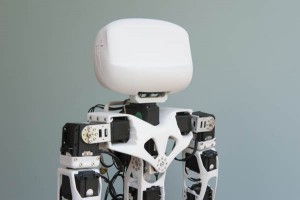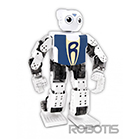Humans have always turned to nature in search of the inspiration they needed to create new inventions and make technological progress.
From the Shinkansen, that famous Japanese high-speed train whose design was inspired by the kingfisher, to the new Speedo swimsuits made of a material imitating shark skin, not forgetting the aeroplane and Velcro®, our greatest inventions are very often based on nature and its biological principles .
Robotics drawing inspiration from nature
Now another field is taking a closer look at nature and biology, in search of new ideas: robotics .
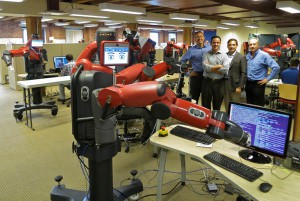
The most recent examples are a small robot that should help find landslide victims more quickly, inspired by the cockroach’s 3 pairs of legs, or a self-contained flying robot controlled by artificial muscles , capable of continuing its flight even after hitting an obstacle.
Robots are even using animal names to better engage with the collective imagination and represent a robot with greater imagery – the most famous example being the TurtleBot mobile robot .
The European Myorobotics project
To help researchers make progress in this area, the European Myorobotics project was set up in early 2012.
The Myorobotics project aims to make musculoskeletal robots available to researchers (in fields like robotics, neurosciences), educators and industry.
This new type of design offers several advantages , particularly in situations where human and robot are obliged to work together, as is already the case with the Baxter collaborative robot .
By taking inspiration directly from the biomechanics of the human body , robots are going to have increased flexibility, dexterity and ability to adapt in real situations.
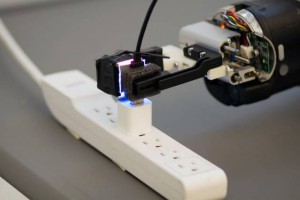
The design of this new generation of robots is inspired directly from the mechanics of the human body . Six types of modules (known as “design primitives”) have been created for these musculoskeletal robots, each corresponding to a biomechanical component of the human body: bones, joints, muscles, ganglions, perceptors and accessories (support and power modules).
These components will be mass-produced to improve cost-effectiveness and facilitate the transition to the market.
A software toolchain will be made available for assembling a virtual musculoskeletal robot , defining control algorithms and new behaviours, simulating interaction with the environment, etc.
Again with a view to facilitating access to these robots, the Myorobotics software (and hardware) will be available as open-source .
The international bionics workshop organised by Myorobotics: International Myorobotics Winter School and Workshop
From 9–12 December , a workshop organised by Myorobotics revolving around this avant-garde project will be held at the famous Cambridge University .
The winter workshop is going to include:
- An introduction to this new technology developed by Myorobotics
- Workshops offering tutorials , simulations and exercises for an initial introduction
- A number of lectures and discussions led by r enowned researchers in the field of robotics, on the theme of Future of Robotics Based on Biological Principles .
Jérôme Laplace , founder and director of Génération Robots , has been invited by MyoRobotics to contribute as part of an international panel of researchers and lecturers in robotics and artificial intelligence including Masayuki Inaba (Tokyo University) and Sangbae Kim (MIT, USA).
At the time of writing, there are still some places available for the International Myorobotics Winter School and Workshop. If you would like to participate, visit the Cambridge University website: The International Myorobotics Winter School and Workshop
Génération Robots’ biomechanics inspired robots:
The Collaborative robot Baxter
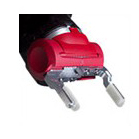
Electric Parallel Gripper Kit for Baxter Research Robot
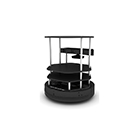
TurtleBot 2 (assembled and complete)

